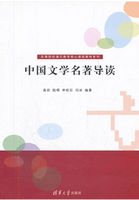However we are certainly not immune to the predicted temperature and precipitation changes, especially considering that migration to more favorable habitats as an adaptive response will not be an option in an increasingly crowded world.
Vocabulary 词汇
civilization ["sivilai"zei??n; -li"z-] n. 文明,文化
medieval ["medi"i:v?l; "mi:-] adj. 中世纪的,老式的,守旧的;
n. 中世纪人
dislocation["disl?u"kei??n] n. 混乱,脱臼,转位
precipitation [pri"sipi"tei??n] n. 坠落,沉淀,沉淀物,鲁莽,冰雹
settlements ["setlm?nt] n. 定居点,殖民地(settlement复数)
vulnerable ["v?ln?r?bl] adj. 易受攻击的,易受伤害的,有弱点的
Practice
What has caused the ruin of Roman Empire?
译文
为了印证环境情况与人类历史之间的关系,科学家们研究了超过7200多块树龄在2500年以上的古树化石。
这篇发表于《科学》杂志的报告称,人类文明的兴衰起伏总是与气候环境的变化密切相关,这主要表现在水源供应、农业生产、人体健康和社会冲突方面。
在夏季温暖潮湿的时期正是罗马和中世纪的繁荣时期。
而从公元250年到600年间,气候变化频繁,这正好配合了西罗马帝国的衰落以及动荡的迁移时期的到来。
三世纪时爆发大规模的干旱,西罗马帝国在这时惨遭野蛮的入侵,在高卢的很多地区政治局面不稳,经济凋敝。
树木的年轮对于降水量的变化十分敏感,它记录了不同时期的环境状况以及变化。
这项研究还收集了有关树木减少所导致的环境改变之间的联系。
研究称,公元250年到400年间,树木被大量砍伐,与此同时恰逢欧洲大陆正遭受着有史以来最大的危机,大迁移,此时标志性的社会现象包括了政治更迭、文化变迁以及经历衰退。
因建筑需求所引发的大规模的伐木行为,正好出现在社会经济趋于平稳的六世纪到九世纪之间。
科学家们还表示,不利的天气条件也助涨了第二次的鼠疫大爆发,黑死病,这些流行病的传染导致了1347之后欧洲人口骤减四到六成。
研究人员还指出,北美地区在同时期出现了气温剧烈下降的情况,从而迫使了大批人口从格陵兰岛迁出。
随着科学技术的进步,人类受到气候环境变化的影响也越来越小。
尽管如此,我们并不能幸免于可预知的气温及降水变化,而在这个日益拥挤的世界里,迁移已经不再是一个选择和适应环境的办法了。
练习
科学家们认为,罗马帝国灭亡的原因是什么?
Increased climate variability and barbarian invasion
04 The Aphrodite of Melos 女神阿芙洛狄忒
The Aphrodite of Melos is made of marble and represents vividly the goddess Aphrodite. This statue had earned it’s name the Venus de Milo or Venus de Melos, because in 1820, a peasant had found it on the Greek island of Melos and it was named after the island where it was found.
The statue shows Aphrodite semi-nude and with a robe wrapped around her legs. For hundreds of years the statue had remained buried in an underground cavern. On account of this, the statue had suffered significant damage and it was found in two parts. Later it was replaced together and sent to France, because the Marquis de Riviere had brought the statue and had given it to Louis XVIII of France. Pieces of arms and a pedestal with an inscription, were also found in the cave, but these were later lost and never found again.
No one knows who created the statue of the Aphrodite of Melos. It is probably the work of the Greek artist Alexandros of Antioch. This name was inscribed on the block of stone on the pedestal that was later lost, but this is doubted from scholars because it may not have been the corrected block with the Venus de Milo, so this had erased the attribution to Alexandros. Some scholars had attributed the work of the statue to Praxiteles. It is said that it was sculpted around the second century B.C.
Vocabulary 词汇
marble ["mɑ:bl] n. 大理石,大理石制品,弹珠;
adj. 大理石的,冷酷无情的
vividly ["vividli] adv. 生动地,强烈地,栩栩如生的,逼真的
robe [r?ub] n. 长袍,礼服,制服
pedestal ["pedist?l] n. 基架,基座,基础;
vt. 搁在台上,加座
inscription [in"skrip??n] n. 题词,铭文,刻印
erase [i"reiz" i"reis] vt. 抹去,擦除;
vi. 被擦去,被抹掉
Practice
Write the answer in the blank using the correct word.
1.The Aphrodite of Melos was found on the island of Melos.
2.When it was replaced, the statue sent to .
3.The arms and a pedestal with an were later lost and never found again.
4. ’s name was inscribed on the block of stone on the pedestal that was later lost.
5.It is said that the statue was sculpted around .
译文
“米洛的阿芙洛狄忒”是由大理石制成的,惟妙惟肖地刻画了女神阿芙洛狄忒。在1820年,一位农民在希腊的米洛岛上发现了这尊雕像,此后它就以这个岛而得名,被称为“米洛的维纳斯”。
雕像展示了阿芙洛狄忒半裸的形象,一条长袍遮住了她的双腿。数百年来,这尊雕像被深埋于一个地下洞穴中。因此,雕像严重受损,当它被发现时已经断为两截。后来它被修复在一起,并送往法国,因为马尔凯斯·德里维尔已购买了这尊雕像,把它送给法国国王路易十八。在洞中也发现了雕像胳膊和刻有铭文的底座的残片,但是后来这些东西均被丢失,而且从此再未找到过。
没有人知道谁创作了雕像“米洛的维纳斯”。它可能是希腊雕刻家,安屈克亚的亚历山德罗斯的作品。因为在那块后来丢失的雕像底座上刻着这个名字,但是学者们对此表示怀疑,因为这可能不是真正的“米洛的维纳斯”的底座,这就使亚历山德罗斯是否是雕像的作者产生了置疑。一些学者认为这尊雕像是普拉克西特利斯的作品。它据说是作于公元前2世纪左右。
练习
选择正确的单词填空:
1.“米洛的阿芙洛狄忒”在 的米洛岛上被发现。
2.修复之后,这座雕像被送往 。
3.雕像的胳膊和刻有 的底座残片后来丢失了,从此再也没找到过。
4.在那块后来丢失的雕像底座上刻着 的名字。
5.据说雕像创作于 。
1.Greek 2.France 3.inscription 4.Alexandros
5.the second century B.C.
05 The Acropolis in Athens 希腊雅典卫城
The boldness and ambition of the Acropolis was funded by the spoils of war, a war that determined the fate of Greece. In 480 B.C., Athens lay in ruins conquered by the seemingly unstoppable Persian Empire. At sea the Persian armada of 800 vessels bore down on the retreating Greek fleet who were hopelessly outnumbered. On the night before the inevitable battle, an owl, symbol of their protective goddess Athena, was seen flying through the night sky. Inspired by this good omen, the Greek navy daringly engaged and defeated the Persian fleet at the battle of Salamis. In one of the great naval victories of history, the Greeks sank 200 enemy ships while losing only 40 of their own. The Persian threat had been overcome. The unexpected victory heralded a new period of stability for Athens and her allies. The Golden Age of Greece was born.
A permanent alliance of Agean city-states was formed called the Delian League to defend Greece’s new found independence from the Persian menace. One man, Heracles of Athens emerged as its undisputed leader. His ambition was ******: to make Athens a political and cultural capital, effectively creating the Athenian Empire. The Acropolis was to be the master stroke of Heracles’ power broking, a monumental declaration of Athens’ dominance in the New World order.
In 447 B.C., he committed the new empire and its wealth to its construction. He brought together three unique artistic talents, Phidias the sculptor, and architects Ictinus and Callicrates. Together they imagined a complex of temples and public places to be built along classical ideals but exceeding them in scale and perfection. Amazingly they worked without architectural plans or drawings as we understand them today. Instead they were guided by a set of codes and principles dictated by the art of geometry.














